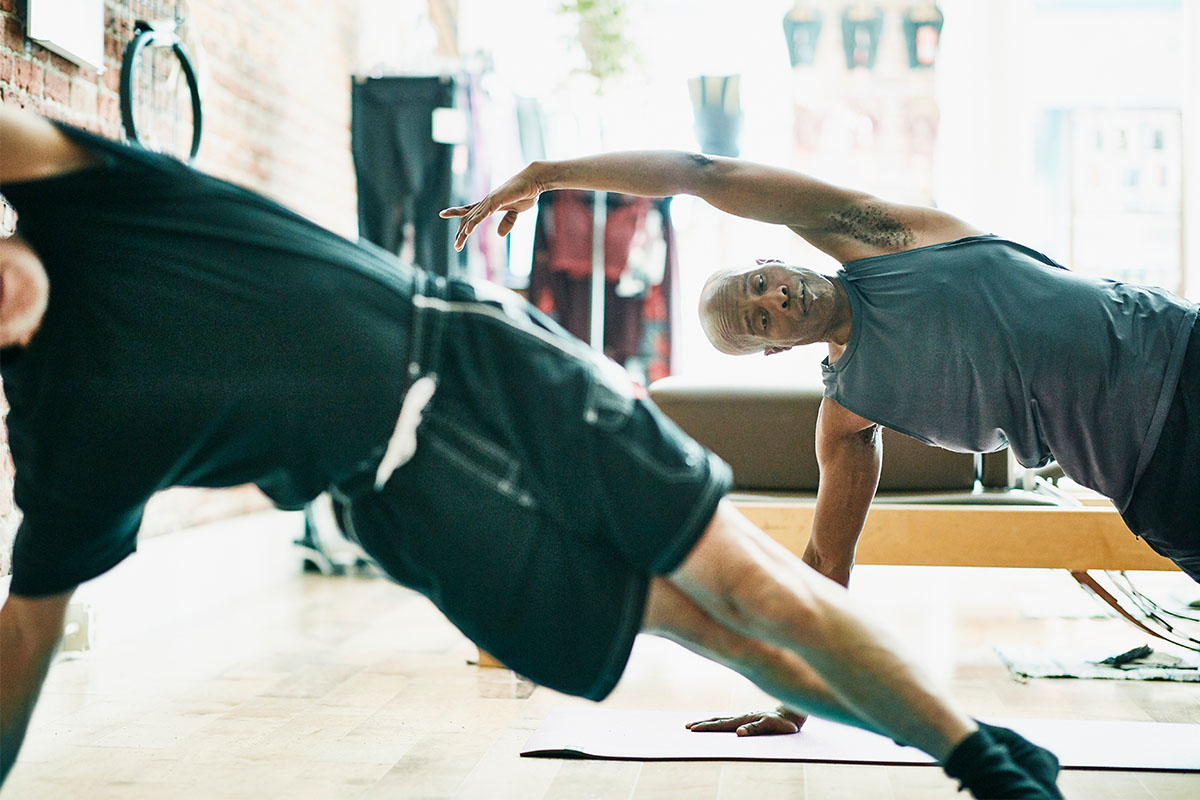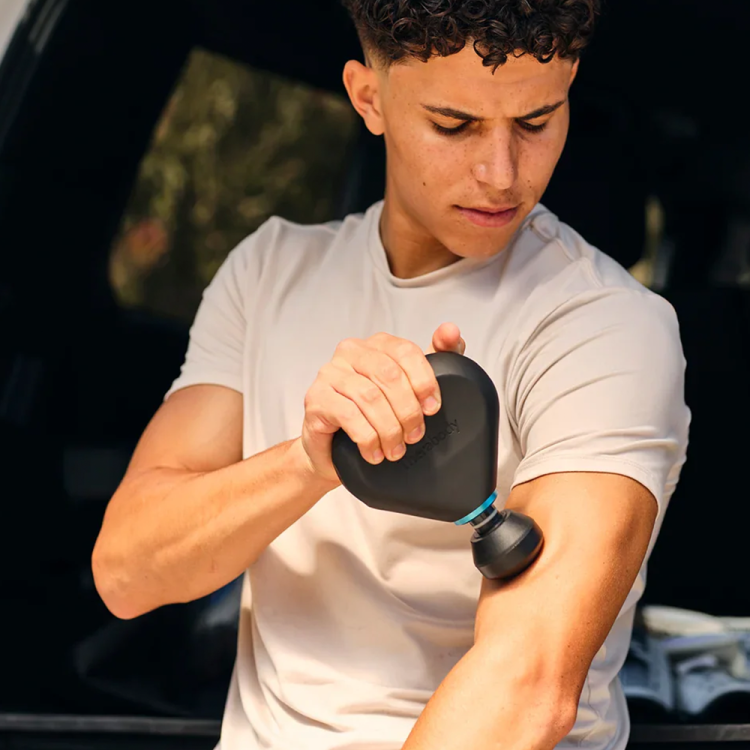At the end of the day, we don’t like planks either. But if you’re avoiding an exercise, that’s a surefire sign your body could use it. And besides, planks are far too effective to ignore. They offer a comprehensive core workout, with zero equipment, guaranteed to improve posture and balance over time.
Plus, isometric exercises are having a moment. According to a buzzy study published in the British Journal of Sports Medicine, isometric exercises like planks have remarkable potential for reducing blood pressure, particularly for individuals with hypertension. So, let’s lean into it. Planks suck. You might as well get to know one of the move’s most dastardly variations: the Copenhagen plank.
The 10 Best Breathing Exercises for Sleep, Fitness and Calm
There are a lot of tricks out there. Keep these in your toolkit.What’s the Copenhagen Plank?
The Copenhagen plank is a variation on the toughest part of your Pilates mat class: the already notorious side plank. It easily fit into any workout-from-home regimen; all you need is a workout bench, chair or ottoman. Here’s a look at one variation of the hold.
You want to place your shin on the bench, then orient yourself in a traditional side plank, with your elbow aligned under your shoulder. The more bench you have under your leg, the “easier” the plank will feel (in relative terms, obviously). So if you adjust the position to have just your ankle touching the bench, there’s less of a lever, and it forces your body to work overtime to maintain stability.
Why the Adductors Matter
You’ve likely seen people in the gym or on Instagram working their abductors, which are located on the outside of the thighs and hips, with exercises like lateral leg raises, lateral band walks and clamshell raises. Those are all worth your time. But the Copenhagen plank version specifically targets the adductor muscles, a group of five muscles in the inner thigh. We tend to neglect these muscles when working out — the fact that they’re always covered with clothing might have something to do with it — but they play a crucial role in hip mobility, injury prevention and core strength.
What to Keep in Mind
In most planks, the marching orders are simple: keep good posture, avoid rocking back and forth, activate the core and the glutes. The endgame is stronger abs and obliques, in addition to general, full-body fitness gains. You definitely want to squeeze the glutes here, but think less about the core and more on squeezing your shoulder blades together (which should keep you from falling over) and letting the adductors do their thing. They’ll start firing the second you get into the plank.
The good news? Unlike most plank holds, which encourage 60 seconds or more of isometric agony, the Copenhagen plank is a brief affair. Just 10 seconds at a time, over three sets, is a great place to start. That said, make sure to schedule it for the beginning of your mat workout (the way you want to do dips or pull-ups before getting into the heavy stuff) because it’s extremely difficult.
Some Extra Credit
Once you master the general pose above, try a more advanced pose, like this one. Notice how he’s pulled that bottom “free” leg forward to a 90-degree angle, similar to a runner lifting his leg in the air. The adductor muscles do their best work when we’re on one leg (walking, jogging, running), which facilitates that natural contraction. Strengthening and stabilizing them in the Copenhagen plank arena will better equip them for all your day-to-day movement.
The Charge will help you move better, think clearer and stay in the game longer. Subscribe to our wellness newsletter today.




















